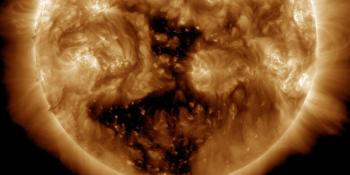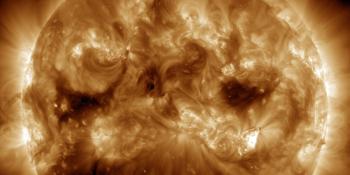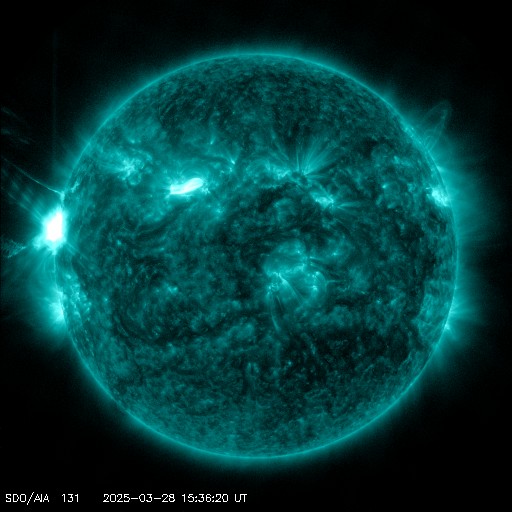Viewing archive of Wednesday, 21 November 2012
Geophysical report
Any mentioned solar flare in this report has a scaling factor applied by the Space Weather Prediction Center (SWPC). Because of the SWPC scaling factor, solar flares are reported as 42% smaller than for the science quality data. The scaling factor has been removed from our archived solar flare data to reflect the true physical units.
Solar and Geophysical Activity Summary 2012 Nov 21 0245 UTCPrepared by the NOAA © SWPC and processed by SpaceWeatherLive.com
Joint USAF/NOAA Solar and Geophysical Activity Summary
SGAS Number 326 Issued at 0245Z on 21 Nov 2012 This report is compiled from data received at SWO on 20 NovA. Energetic Events
Begin Max End Rgn Loc Xray Op 245MHz 10cm Sweep 0137 0207 0305 1618 N08E27 C3.0 Sf 760 1236 1241 1246 M1.7 40 64 1921 1928 1932 1618 N07E15 M1.6 Sn 130 90 2118 2118 2118 380 2200 2200 2200 100 2238 2238 2238 370 2328 2328 2328 120
B. Proton Events
None.
C. Geomagnetic Activity Summary
The geomagnetic field was
predominately quiet to unsettled with an isolated active period due
to an extended period of southward Bz.
D. Stratwarm
Not available
E. Daily Indices: (real-time preliminary/estimated values)
10 cm 141 SSN 119 Afr/Ap 010/013 X-ray Background B6.1 Daily Proton Fluence (flux accumulation over 24 hrs) GT 1 MeV 1.9e+05 GT 10 MeV 1.1e+04 p/(cm2-ster-day) (GOES-13 satellite synchronous orbit W75 degrees) Daily Electron Fluence GT 2 MeV 2.10e+07 e/(cm2-ster-day) (GOES-13 satellite synchronous orbit W75 degrees) 3 Hour K-indices Boulder 2 3 2 3 2 3 3 3 Planetary 2 2 2 3 2 3 4 3
F. Comments
None.
All times in UTC
Current data suggests there is a slight possibility for aurora to appear at the following high latitude regions in the near future
NorilskLatest news
Latest forum messages
AR4046 15AR4043 35Incoming & Unnumbered Active Regions 1651The multiple event last week. 2Filaments and prominences 747
More topicsSupport SpaceWeatherLive.com!
A lot of people come to SpaceWeatherLive to follow the Sun's activity or if there is aurora to be seen, but with more traffic comes higher server costs. Consider a donation if you enjoy SpaceWeatherLive so we can keep the website online!

Latest alerts
15:45 UTC - 10cm Radio Burst
Begin Time: 28/02/2025 15:06 UTC Maximum Time: 28/02/2025 15:14 UTC Duration: 24 minutes. Peak flux: 380 sfu
15:45 UTC - Type IV Radio Emission
Begin Time: 28/03/2025 15:14 UTC
15:42 UTC - Solar flare
Major X1.14 flare from sunspot region 4046
15:21 UTC - Radio Blackout
Strong R3 radio blackout in progress (≥X1 - current: X1.08)
15:18 UTC - Radio Blackout
Moderate R2 radio blackout in progress (≥M5 - current: M6.33)
Space weather facts
| Last X-flare | 2025/02/23 | X2.0 |
| Last M-flare | 2025/03/27 | M2.0 |
| Last geomagnetic storm | 2025/03/27 | Kp5 (G1) |
| Spotless days | |
|---|---|
| Last spotless day | 2022/06/08 |
| Monthly mean Sunspot Number | |
|---|---|
| February 2025 | 154.6 +17.6 |
| March 2025 | 130 -24.6 |
| Last 30 days | 130 -22.2 |



